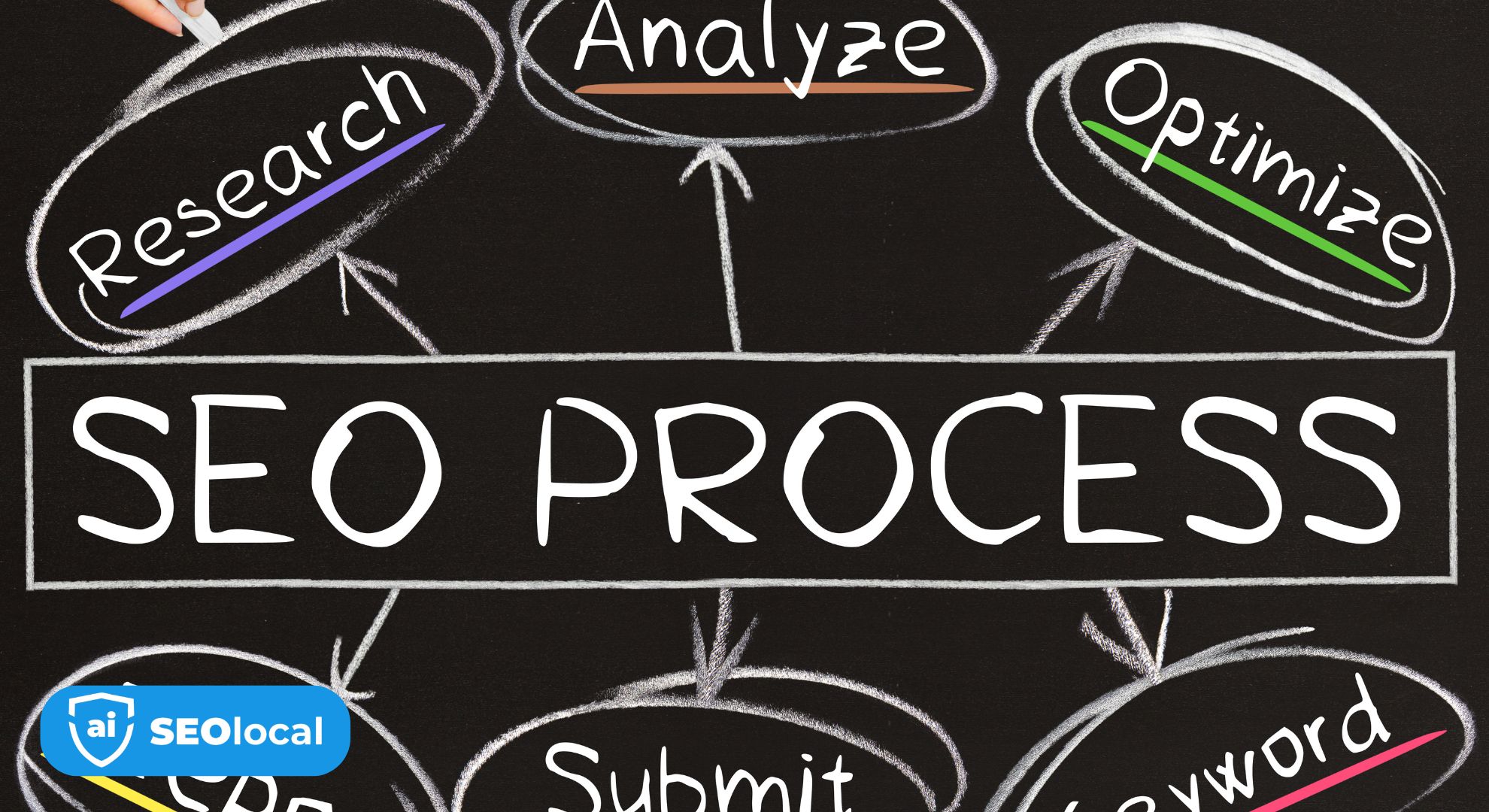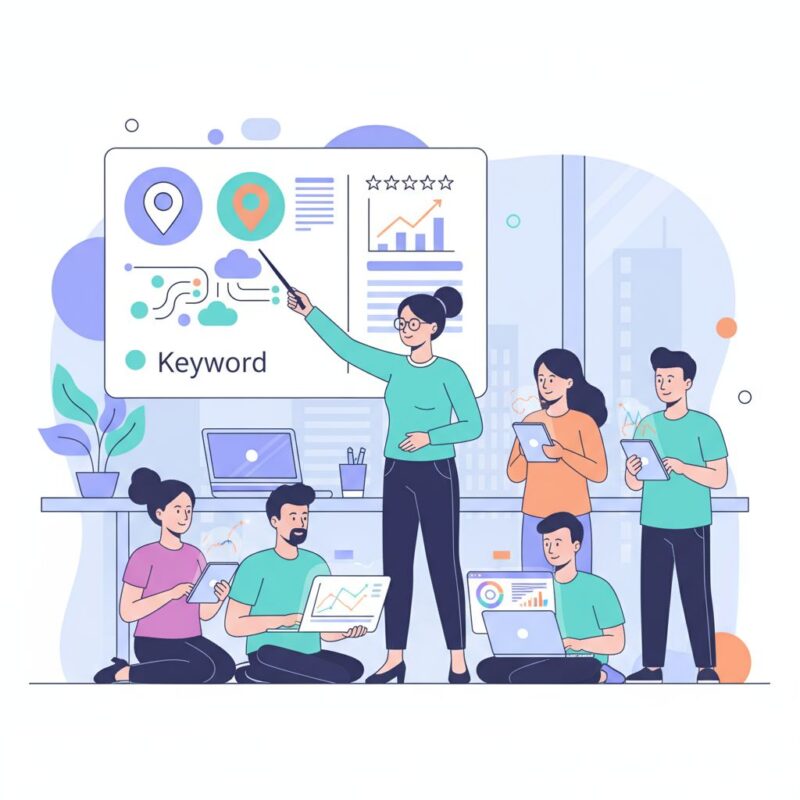- Advanced Local SEO Strategies
- Fundamentals of Local SEO
- Google Business Profile (GBP) Optimization
- Local Keywords and Content Strategy
- Local Link Building
- Local Paid Advertising
- Local Search Ranking Factors
- Local SEO Best Practices
- Local SEO Tools and Analytics
- Local Social Media Marketing
- Online Reviews and Reputation Management
- Technical SEO for Local Businesses
How to Align Your Local SEO Strategy with the Customer Journey

78% of U.S. shoppers start their purchase process online—but 62% of businesses still focus only on ranking for generic keywords. This disconnect creates missed opportunities when people search for solutions in your area. The secret? Building an approach that meets users exactly where they are in their decision-making process.
Traditional methods prioritize search volume over actual intent, leading to traffic that rarely converts. Imagine someone typing “best coffee near me” versus “organic Ethiopian coffee beans Brooklyn.” The second query shows clearer buying intent—and better revenue potential for businesses ready to answer it.
This guide reveals how to shift from chasing rankings to creating connections. You’ll learn why visibility at the right search moments matters more than ever. We’ll explore how aligning your efforts with user needs turns casual browsers into loyal customers.
Key Takeaways
- Most purchases begin with online searches, making strategic visibility essential
- Generic keyword targeting often attracts irrelevant traffic
- User intent analysis drives higher-quality leads
- Businesses invisible during critical search moments lose to competitors
- Modern strategies require understanding buying-stage behaviors
Understanding the Customer Journey in Local SEO
Every interaction a potential client has with your business shapes their decision-making process. This path—often called the customer journey—isn’t a straight line. People might discover your brand through a search, revisit your site weeks later, and then ask friends for opinions before buying.

What Is This Path?
The journey represents all touchpoints someone experiences while exploring solutions. It starts with awareness (like seeing your Google Business Profile) and moves through research, comparison, and final decisions. A visual map helps track these steps, showing where people engage or lose interest.
Why This Understanding Drives Results
When you know how clients move toward purchases, you create content that answers their exact questions. For example:
- Searchers in the discovery phase need educational blogs
- Comparison-stage users look for product details or reviews
- Ready-to-buy visitors seek pricing or store hours
This approach matches their intent, boosting visibility for high-value searches. It also reveals gaps—like missing service pages that cause bounce rates to spike.
Non-linear behaviors are common. Someone might read a blog, check social media, then return via a direct search. By addressing needs at each step, you build trust and guide prospects toward conversion.
The Power of Local SEO customer journey mapping
Many businesses struggle to connect online visibility with actual buyer behavior. Mapping interactions reveals patterns that generic optimizations miss. Think of it as decoding hidden signals in how people search for solutions near them.
This approach uncovers where prospects get stuck or lose interest. You might discover mobile users abandon your site during checkout or that service pages lack clear location details. These insights help prioritize fixes that drive conversions.
Visualizing the buyer’s path does three critical things:
- Highlights missed opportunities in your content strategy
- Identifies moments where competitors outperform you
- Creates alignment across marketing and operations teams
A well-structured map becomes your team’s playbook. It shows which queries indicate research versus purchase intent. For example, someone searching “how to fix leaky faucet” needs educational content, while “emergency plumber downtown” signals urgency.
This method also bridges gaps between departments. Sales teams understand what information prospects need before contacting them. Web developers see which technical issues hinder conversions. Everyone works from the same data-driven blueprint.
Mapping the Stages of the Customer Journey
Three distinct phases shape how people find and choose solutions. Breaking down the process into awareness, consideration, and decision stages helps you spot critical interactions. Each phase demands tailored content and technical adjustments to guide prospects effectively.
Identifying Key Touchpoints
Every interaction matters. Touchpoints occur when potential buyers encounter your brand—whether through a Google search, physical signage, or a follow-up email. Track these moments to understand behavior patterns.
| Stage | Common Touchpoints | Typical Pain Points |
|---|---|---|
| Awareness | Blog posts, social ads, word-of-mouth | Unclear problem definition, information overload |
| Consideration | Product comparisons, email campaigns | Confusing pricing, missing service details |
| Decision | Checkout pages, review platforms | Long wait times, complex forms |
Uncovering Customer Pain Points
Frustrations often derail conversions. Analyze feedback and behavior data to pinpoint where prospects hesitate. Common issues include unclear service details or slow response times.
For example, mobile users might struggle with unoptimized forms during checkout. Others may abandon carts due to unexpected fees. Fixing these friction points improves satisfaction and completion rates.
Combine website analytics with direct surveys to identify recurring problems. Address gaps in real-time—like adding live chat for urgent questions—to keep the path to purchase smooth.
Aligning SEO Tactics with Buyer Searches
Ever notice how some searches signal curiosity while others scream “take my money”? Your website’s performance hinges on matching content to these distinct moments. Three search categories dictate user needs: navigational (brand-specific), informational (problem-solving), and transactional (purchase-ready).

Navigational queries like “XYZ Bakery hours” indicate familiarity with your brand. Optimize Google Business Profiles and service pages here. Use consistent business names and addresses to reinforce recognition.
Informational searches—think “how to repair garage door springs”—require educational content. Create detailed guides or video tutorials answering these questions. This builds authority early in the decision process.
Transactional terms like “buy organic dog food Austin” demand product-focused pages. Highlight inventory, pricing, and store-specific perks. Include clear calls-to-action like “Check in-store availability.”
To align efforts:
- Analyze search terms in Google Search Console to categorize intent
- Develop landing pages for high-value transactional phrases
- Repurpose blog content into FAQs for informational seekers
This approach stops guesswork. You’ll attract visitors actively seeking solutions, not just random clicks. Track conversions per search type to refine your strategy over time.
Creating an SEO-Friendly Customer Journey Map
A well-structured blueprint bridges the gap between user needs and your online presence. Start by outlining every step people take—from discovering your brand to making repeat purchases. This visual tool highlights where your content aligns with their search behavior and where gaps exist.
Essential Elements to Include
Your map needs four core components to drive results:
| Component | Description | Example |
|---|---|---|
| Buying Process | Stages from discovery to decision | Awareness, Evaluation |
| User Actions | Behaviors at each phase | Reading blogs, comparing prices |
| Pain Points | Obstacles causing friction | Unclear pricing, slow site |
| Solutions | Tactics to resolve issues | Transparent pricing, speed fixes |
Document each stage with corresponding search queries. For instance, awareness-stage users might look for “how-to” guides, while decision-stage searches include “best near me.”
List specific actions like clicking service pages or saving store locations. Use analytics to spot trends—maybe mobile users abandon forms, indicating a technical fix is needed.
Pair every pain point with actionable solutions. If reviews mention confusion about services, create comparison charts or service area pages. Update your map quarterly to reflect new data and search trends.
Leveraging Research and Analytics for Continuous Improvement
Data reveals that 63% of companies updating their strategies quarterly see higher conversion rates. To stay ahead, you need systems that turn raw numbers into actionable insights. Start by tracking how visitors interact with your site—where they click, how long they stay, and what makes them leave.
- Analyze search query reports to spot trending topics
- Review page exit rates to identify content gaps
- Monitor time-on-page metrics for engagement clues
Use this data to prioritize updates. For example, pages with high bounce rates might need clearer calls-to-action or better mobile formatting. Tools like heatmaps can show where users get stuck during checkout processes.
| Analysis Type | Tools Used | Key Insights |
|---|---|---|
| Behavior Flow | Google Analytics | Identifies popular content paths |
| Keyword Performance | Search Console | Shows intent alignment gaps |
| Feedback Synthesis | Survey Responses | Reveals unmet needs |
Update your strategy every 90 days. Markets shift—new competitors emerge, and search habits evolve. Compare current results to past benchmarks to measure progress. Adjust content formats based on what performs best, whether video demos or quick-read checklists.
This cycle turns guesswork into precision. You’ll replace outdated pages with resources that match real-time demands. Over time, these incremental improvements compound into measurable growth.
Optimizing Content for Every Stage of the Journey
Different moments in the buying process demand tailored information. Your audience needs specific answers as they move from discovery to purchase. Matching your materials to these phases creates smoother paths to conversions.

Content Strategies for Awareness and Consideration
Start with educational materials for early-stage explorers. How-to articles and beginner guides build trust without sales pressure. For example:
- Industry reports explaining common challenges
- Video tutorials demonstrating basic techniques
- Checklists for evaluating service providers
As prospects narrow their options, shift to comparison tools. Detailed case studies and product breakdowns help them weigh choices. Webinars with experts add credibility during evaluation phases.
Tactical Content for Decision and Purchase
Final-stage visitors want clear, actionable details. Highlight what makes your offering unique with:
| Stage | Content Type | Key Elements |
|---|---|---|
| Awareness | Educational Blogs | Problem identification, basic solutions |
| Consideration | Comparison Charts | Feature breakdowns, competitor analysis |
| Decision | Pricing Pages | Transparent costs, availability details |
Include testimonials and implementation guides to ease last-minute doubts. Free trial offers or live demos often tip the scales for hesitant buyers. Align every piece with the prospect’s current needs to reduce friction.
Technical SEO: Enhancing Your Website’s Performance
A fast-loading website acts as a silent salesperson, keeping visitors engaged from the first click. Technical elements like code structure and server response times form the foundation of user experience. Without these optimizations, even the best content can struggle to convert.
Boosting Load Times and Mobile Responsiveness
Page load delays over three seconds increase abandonment rates by 40%. Start by compressing images without losing quality. Enable browser caching and minify CSS/JavaScript files to reduce server requests.
Mobile users expect seamless browsing. Ensure responsive design adapts to all screen sizes. Test button sizes and font readability on handheld devices.
Security upgrades also play a role. Install SSL certificates to activate HTTPS protocols. This encryption builds trust while improving search rankings.
Regular audits using tools like Google PageSpeed Insights reveal hidden issues. Fix broken links, optimize meta tags, and streamline navigation paths. These changes create faster, safer experiences that keep visitors moving toward conversion.
Incorporating Trust and Branding in Your SEO Strategy
Trust operates as currency in modern search algorithms. Platforms prioritize brands demonstrating expertise and reliability, rewarding those who consistently meet user expectations. This alignment between credibility and visibility directly impacts how prospects perceive your business at critical decision points.
Strategic Signals That Influence Decisions
Early-stage interactions rely heavily on third-party validation. Backlinks from industry publications or educational partnerships establish authority during discovery phases. A plumbing company cited in a home improvement magazine gains instant credibility with new audiences.
Final purchase decisions hinge on tangible assurances. Displaying security certifications or satisfaction guarantees reduces friction for ready-to-buy visitors. Testimonials showcasing real client outcomes often tip the scales when comparing options.
Key tactics include:
- Encouraging verified reviews across multiple platforms
- Showcasing media mentions or awards in website headers
- Implementing trust badges on checkout pages
These elements work together to create cohesive brand experiences. They transform anonymous searches into confident conversions by addressing unspoken concerns at every interaction point.
FAQ
How does understanding the buyer journey improve search visibility?
Recognizing how people search at different stages helps you tailor content and keywords. This alignment ensures your brand appears when users need solutions, boosting relevance and rankings.
What tools can identify gaps in a journey map?
Analytics platforms like Google Analytics or Hotjar track user behavior. Surveys, heatmaps, and keyword research tools also reveal where audiences struggle or disengage, guiding refinements.
Why are reviews critical for optimizing the decision stage?
Positive feedback builds credibility and reduces hesitation. Highlighting testimonials or ratings in product pages or snippets reassures prospects, increasing conversion likelihood.
How does mobile optimization impact early-stage engagement?
Slow or poorly formatted sites frustrate users researching solutions. Faster load times and responsive design keep visitors exploring your content longer, improving retention and signals to search engines.
Can a single page address multiple stages of the journey?
Yes. For example, a service page can educate (awareness), compare options (consideration), and include CTAs (decision). Use clear headings and structured data to help search engines understand its purpose.
What role do pain points play in keyword targeting?
Identifying common frustrations lets you create content that answers specific queries. Phrases like “how to fix X” or “best solution for Y” attract users actively seeking help, driving qualified traffic.
How often should a journey map be updated?
Revisit it quarterly or after major shifts in user behavior, industry trends, or algorithm updates. Regular audits ensure your strategy stays aligned with evolving needs and search patterns.














